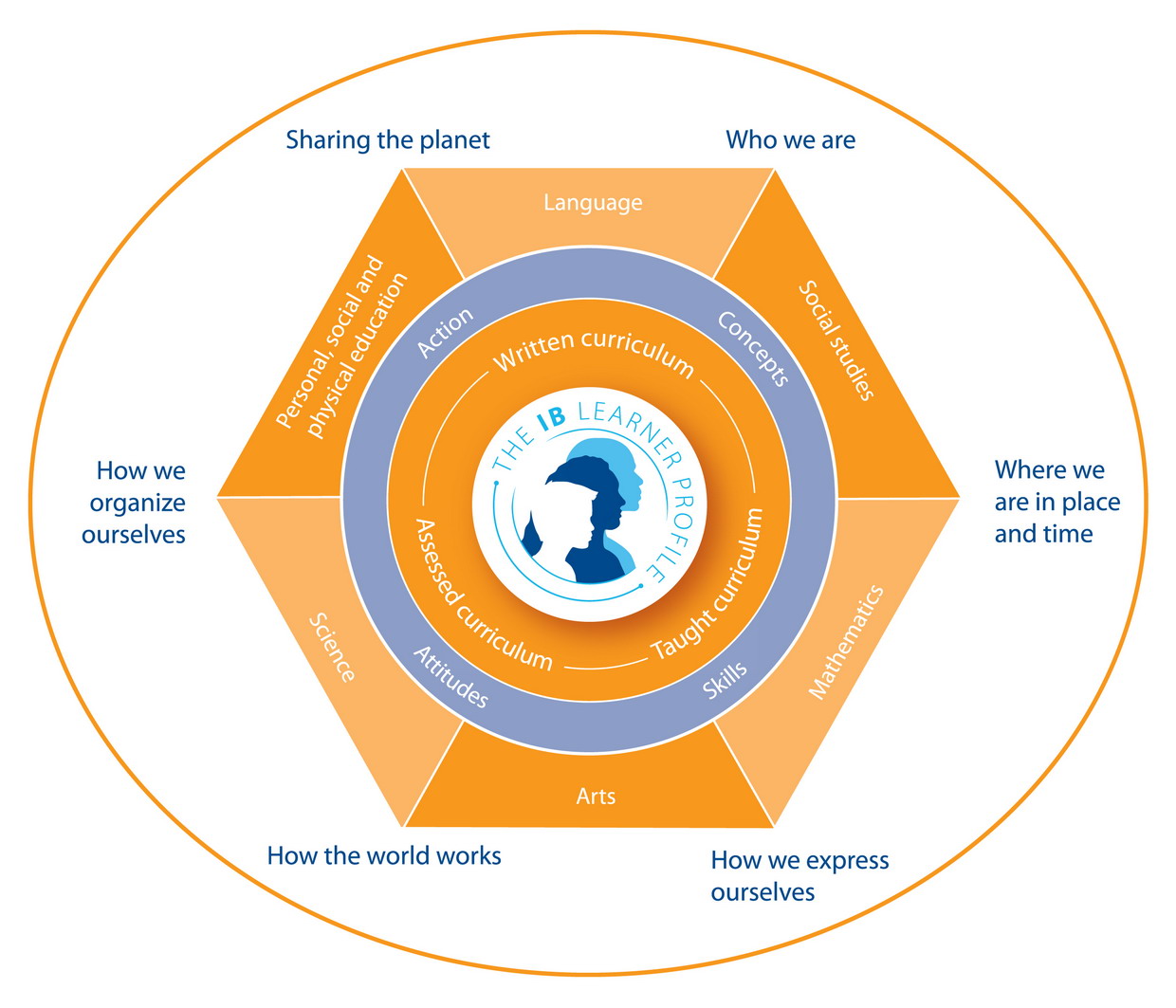|
Elementary School Curriculum
The Curriculum
At the
centre of the PYP curriculum are five essential elements:
knowledge, concepts, skills, attitudes, and action. The aim
of the programme is to help students acquire a holistic
understanding of six main themes, shown on the outside of
the programme model (below), through the interrelatedness of
these essential elements.
PYP
Curriculum Model

© International
Baccalaureate Organization
The PYP identifies a body of
knowledge for all students in all cultures, in six subject
areas:
In the
spirit of internationalism, students are required to learn a
second language in addition to the language of instruction
of the school.
Six transdisciplinary themes
The essential elements at the centre of the curriculum model
are developed and applied in a context defined by the six
transdisciplinary themes.
Assessment
Teachers and students from OIS assess student work; there
are no examinations or external moderation of student work
by the IBO. There are two types of assessment.
|
Formative |
This is
interwoven with daily
learning and helps teachers
and students find out what
the students already know in
order to plan the next stage
of learning. Formative
assessment and teaching are
directly linked: neither can
function effectively or
purposefully without the
other. |
| |
|
|
Summative
|
This happens
at the end of the teaching
and learning process. It
gives the students
opportunities to demonstrate
what they have learned. |
|
|
|
The PYP requires that
individual portfolios of student achievement be kept, as an
important mechanism for documenting progress. OIS students
in grade five, the final year of the programme, participate
in a culminating project, the PYP exhibition. This is
designed to demonstrate their proficiencies in all areas of
the programme.
|